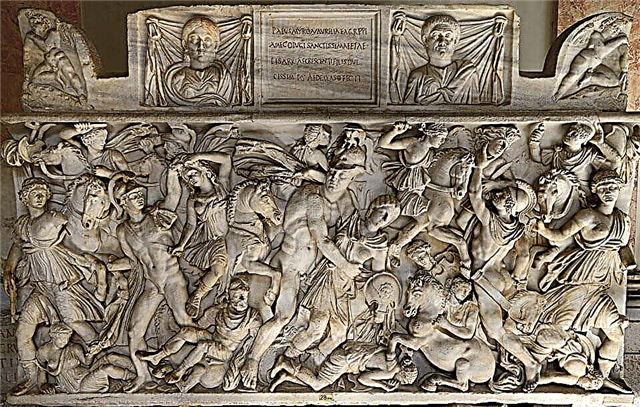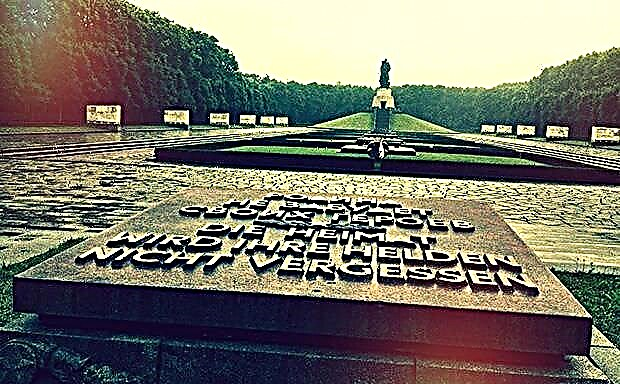Outside the historical center of the city, in the southern part of Ivanovo, there is a red-brick five-domed church - the only one that has survived from a women's monastery that once stood here. A large picturesque temple was erected in the Russian style at the beginning of the last century. It has become a real symbol of monastic asceticism and charity in Ivanovo and may be of interest not only to pilgrims, but also to everyone who travels along the routes of the “Golden Ring” of Russia.
The history of the construction of the temple
The events leading to the opening of the new convent took place in 1899. The initiator of its creation was the daughter of the Ivanovo merchant E.G. Korina and her godmother N.I. Shcherbakov. One of the relics of their family, passed down from generation to generation, was the icon of the Vladimir Mother of God, so believing women advocated the creation of a monastery dedicated to this image.

House of N.I. Shcherbakova became a gathering place for all sympathizers with the idea of creating a new monastery. A year passed, and the wife of the owner of the local copper foundry S.I. Zhokhova donated a land plot in the southern suburbs of Ivanovo for the future monastery. Then the owners of the hedge-reed production, brothers Aleksey Vasilievich and Aleksandr Vasilievich Konstantinov, enclosed this area with a fence, dug a well and moved a wooden house here, in which it was planned to organize a women's almshouse. In addition, the Konstantinovs dug a new cellar and built a cowshed and a bathhouse.
S.I. Zhokhova wrote to Archbishop Sergius with a request to build an almshouse with a church on the new land, and later to reorganize it into a women's community, and, if necessary, into a monastery. The permission of the church authorities was obtained, and in 1901 the Alekseevskaya almshouse was opened. And Zhokhova was appointed her guardian.
In addition to the five elderly women who were here on full support, others lived in the new almshouse, as they called "workers" at that time. They looked after the old women, ran the household, worked in the garden, and also did needlework. One of the rooms in the wooden building was set aside for regular church services, which were attended by residents of the nearby neighborhoods of the city.

The construction of the temple at the Alekseevskaya almshouse began in the spring of 1902. The initial project was prepared by the provincial architect Peter Gustavovich Begen. He proposed the erection of a two-story almshouse from bricks, combined with a temple. However, the circumstances have changed. The wealthy Ivanovo businessman A.N. Derbenev found the necessary money to build a separate large church. The architect made the necessary corrections in the original project, and a year later the building was re-laid.
The money for the temple was donated not only by A.N. Derbenev, but also by the Konstantinov brothers, and N.I. Shcherbakova. In two and a half years the construction work was completed, and at the end of December 1904 the main altar of the new church was consecrated. And the side chapels dedicated to the Christian Saint Mary Magdalene and the Orthodox monk, the holy fool Mikhail Klopsky, were consecrated three years later - in December 1907.
A huge four-tier iconostasis was placed inside the church, on which icons of "ancient Moscow" writing were placed. A slender wooden bell tower was built next to the brick church. The large temple towered noticeably above the one-story buildings that existed here at the beginning of the last century and began to play the role of an architectural dominant on the southern outskirts of the city.

Church history in the 20th century
When the temple opened, the number of women willing to live and work in the poorhouse increased significantly. Many of them had the experience of living in monastic cloisters, so every day the almshouse was built according to strict monastic rules. In order for everyone to be able to adequately accommodate on the territory, in 1906 a two-storey house with 2 floors was built here. Its upper part was taken away for living quarters, and a refectory was equipped below.
A year later, the almshouse united over 50 women - peasant women from several provinces of Russia, widows of clergymen and former nuns. They cultivated 15 acres of plowing, on which they grew good yields of potatoes, rye and oats. In addition, the women worked in three vegetable gardens, an apiary and a barnyard. They did needlework, created their own choir, and also participated in all church rituals. All the women wanted a nunnery to be formed on the site of the almshouse and wrote petitions about this to the Vladimir spiritual consistory.
The fact is that S.I. Zhokhova could not lead the monastery, since she lived in a family, that is, she led a secular lifestyle. Finally, the requests from the Alekseevskaya almshouse were heard, and the elderly nun Augusta from the Vladimirsky Dormition Knyaginin monastery... Officially, the female monastic community was formed at the end of the summer of 1908, and the almshouse became an integral part of it.

It took another 8 years for the community to be transformed into a monastery. During this time, through the efforts of A.N. Derbenev and A.V. Konstantinov, she significantly expanded her land holdings, and new wooden buildings were built on the territory. In 1916, 76 nuns lived in the newly created monastery.
In 1918, the new Soviet government created a labor artel on the territory of the monastery. The nuns who lived here continued to cultivate the land, and also made quilts and knitted stockings. Three years later, the nuns were ousted, housing student dormitories in the monastery. And three years later, when the students moved out, the living quarters were given to the families of workers in city textile enterprises. Soon the monastery was closed by the decision of the gubernial executive committee, and the buildings on its territory were converted for the air squadron barracks. In 1928 the monastery church was also closed.
However, the empty temple did not give rest to the authorities. Under the pretext that the domes and crosses interfere with the normal movement of aircraft, in 1930 the Vladimir Church was beheaded and the wooden bell tower standing next to it was destroyed.

The fate of the nuns of the women's monastery developed in different ways. Some of them continued to live in the city, having bought a wooden house for joint use. Some of the nuns were arrested on suspicion of religious propaganda and sent to camp work. Three women - Margarita Zakachurina, Fevroniy Ishina and Tamara Provorkina - were shot at the end of 1937 by a trio. The former abbess of the nunnery Augusta lived the remaining years in Ivanovo and died in 1960.
For a long time, the temple of the former monastery was located on the outskirts of a military enterprise and was used as a warehouse. And only in 1993 church services were resumed in it. Of course, having stood unattended for several decades, the temple required major repairs. A new iconostasis was installed in it and the ruined chapters were gradually restored. A small area around the church was surrounded by a picturesque fence.
Architectural features and interior decoration of the temple
The large five-domed church was built of red brick in the style of Russian churches. The architects erected similar religious buildings in the 17th century on the territory Moscow and Yaroslavl... The main temple volume consists of a cube-shaped quadrangle and a porch-porch slightly lowered in height.

The facades of the church have protruding volumes with a three-bladed end. On the west side, the façade leaves the impression of being unfinished. This is not surprising, since it was from this side that it was originally planned to attach the stone building of the almshouse. But the architectural project of P.G. Begen was never fully implemented.
At the entrances to the temple there are elegant porches under a gable roof.And the windows are framed by expressive curly platbands and kokoshniks. In addition, the corners of the building are decorated with two-tiered paddles.
The current state of the church and the visiting regime
The temple is functioning, and church services are held here daily. Patronal holidays are celebrated on June 3, July 6 and September 8. There is a small parking nearby.
How to get there
The temple is located on Lezhnevskaya street, 118A, 1.3 km from the city bus station.
By car. On the M7 highway from the capital to Ivanovo, you can drive 4.5-5 hours (290 km). From the southern outskirts of Ivanovo, in the direction of the city center, you need to go along Lezhnevskaya street. The temple stands on the left side of the street and is clearly visible between the houses.

By train or bus. From the Yaroslavsky railway station in Moscow to Ivanovo, the train reaches in 7 hours. The railway station is located in the central part of Ivanovo. In addition, it takes 6 hours to get from the Central Bus Station in Moscow near the Shchelkovskaya metro station to Ivanovo by direct or transit buses. The bus station in Ivanovo operates in the southern part of the city and is 6.5 km away from the railway station. You can drive up to the temple in the city by buses No. 7, 14, 33, 100, trolleybuses No. 2, 7, 11, as well as route buses No. 7, 30, 30B, 31, 35, 37, 39, 100, 135, 177 ( stop "Cinema" Lodz "" or "Street Velizhanskaya (Lezhnevskaya)"). The church can also be reached on foot.
Attraction rating:











